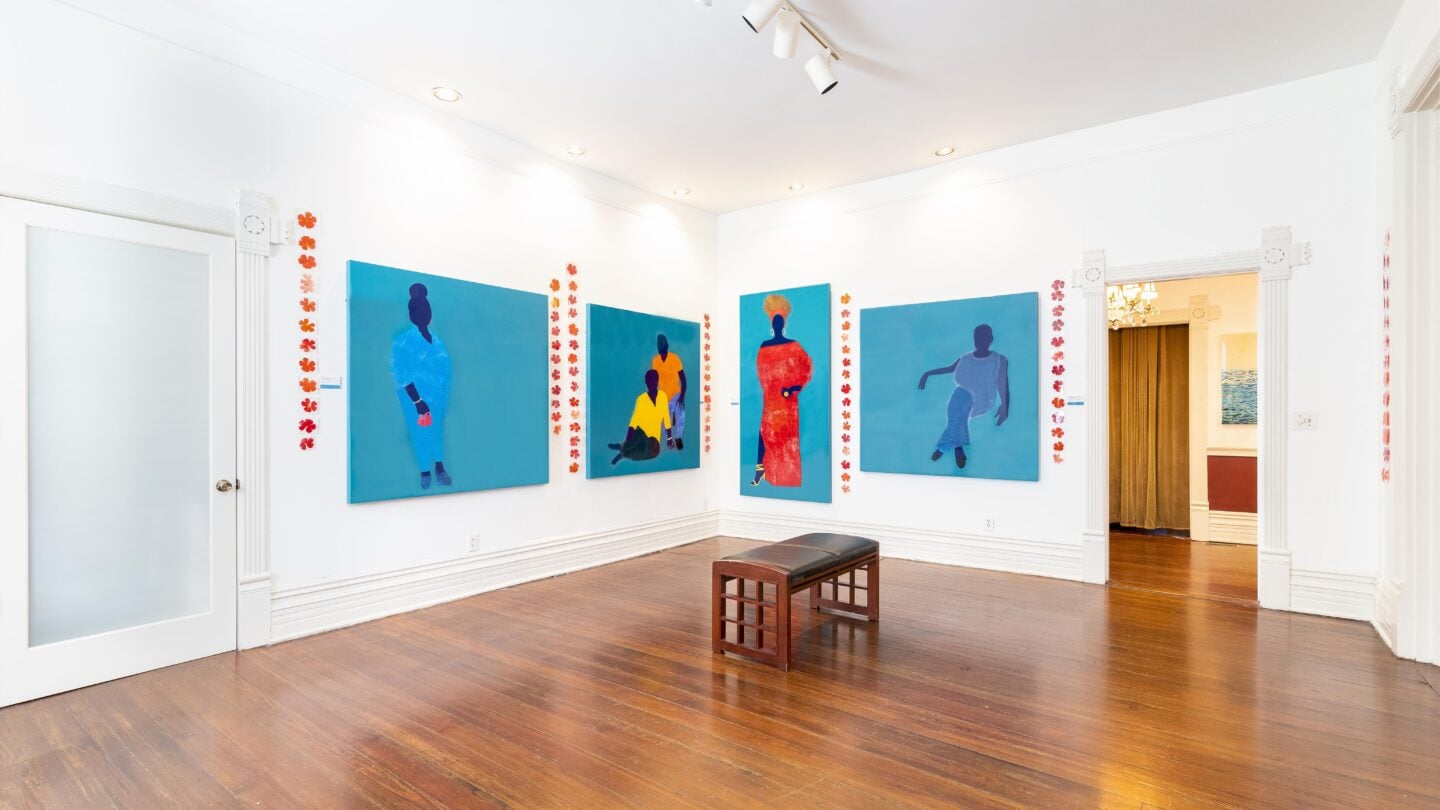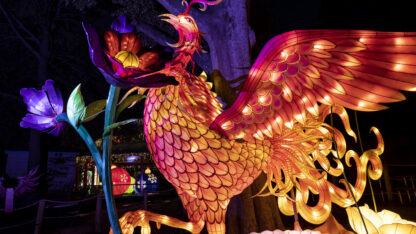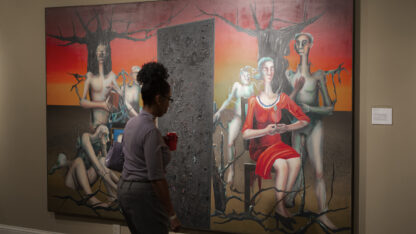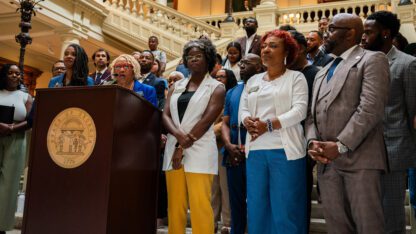Hammonds House Museum exhibit explores Haitian transmigration through a female lens

Migration has been a part of the human experience throughout history. A new solo exhibition at Hammonds House Museum, “In Hope For a Better Future,” explores contemporary Haitian transmigration from a female perspective, showcasing works by the artist Tracy Murrell through Dec. 18. Murrell joined “City Lights” host Lois Reitzes via Zoom along with Wallis Etienne, vice president of the Atlanta-based nonprofit International Women of Hope, to talk more about this journey through Haiti’s migration story.
Interview highlights:
Experiencing an artist’s immersion in Haitian history and diaspora:
“I wanted to have everyone who comes into the exhibition … [to] feel an ‘island’ feel. So I was able to take two of my encaustic rice paper paintings and have them copied onto these floor-to-ceiling poly silk panels, and I created all of these of the sun and the island in resin and made it a transformative space. So when you walk in, you’re there,” said Murrell. “When you move into Gallery B, I have the portraits of the women from the International Women of Hope that were my guides and are my sisters, and of Miss V, who was one of the women that we interviewed. And she was able to, through a translator, let me know about the services that she’s receiving and what her life is like being in Haiti.”
“Then I move on to, in the hallway, giving a view of … a sculpture of Africa and then a painting of a slave ship, and then I have another painting of a raft on the water and a sun to show this is the beginning of where Haitians came from. This is how they got to this part of the world and this is what they’re experiencing now. So each part of the exhibit has a different feel.”
“The exhibition ends with the reading room,” Murrell explained. “All of the books that I read over the last two or three years, that each one gave me new information, I presented those books in a nice seating area. And the New York Times put out an article in June, and it talks about the debt that Haiti had to pay to France for their freedom and what it has cost Haiti. Because it didn’t just end with one payment — it continued, and that I s… one of the reasons why Haiti’s in the financial position that it’s in.”
Artist Tracy Murrell on discovering her Haitian family background:
“About my Haitian ancestry — that was something that was new,” Murrell said. “I discovered that the National Geographic Genome Project had a program where they will test your DNA and give you the migratory path of your DNA, and I thought, ‘Wow, that is so cool,’ and it fit into the theme of my work of exploring migration … It came back and it terminated in two places and it terminated in Bermuda. And I thought physically I could see that. And then it terminated in Haiti with 56% of my DNA similar to Haitian DNA in their gene pool that they had tested. And I started asking my family members … and they’re like, ‘This is news to us.’ And so it was something that I wanted to explore and find out more about it.”
On the outreach programs of International Women of Hope:
“As the vice president of International Women of Hope, ‘HOPE…’ is an acronym. It stands for ‘Healing, Opportunity, Purpose and Education.’ In my position as the vice president, I came on board and I saw the wonderful work that the International Woman of Hope was doing. I was amazed, and I saw how they were reaching back out to not only Haitian women in Haiti but also the women here in Atlanta that they’ve been servicing,” said Etienne.
She went on, “We have so many wonderful programs that we’re doing to help the economical base and to help strengthen women so that they can be self-sustaining and not in a position where they’re having to depend so much … We have worked with women who’ve escaped domestic violence. It’s a very difficult thing, getting calls in the middle of the night trying to help women, place women, and helping them heal. We offer a lot of education and awareness for women in the metro area where we invite a therapist to come and speak, and we also are connected with the church, and just provide a spiritual aspect as part of their healing.”
“In Hope for a Better Future: Exploring Haitian Transmigration through the Female Lens” by Tracy Murrell is on view at Hammonds House Museum through Dec. 18. Tickets and more information are available here.








